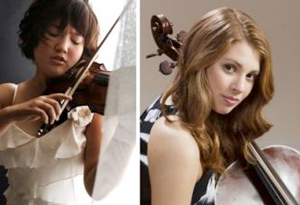by Daniel Hathaway

Prokofiev’s seventh symphony was written for a radio program to be broadcast by the Children’s Division of the Russian National Radio network. Its landscape is as child-friendly as an outdoor playground, fitted out with magical textures, wistful waltzes, playful themes and carnival gestures. The orchestra’s strings produced a nice, rich sound at the beginning, accompanied by dark, mysterious horns and graced by splendid clarinet solos (Pamela Elliot). Though the second movement exposed some tentative playing in the brass and percussion, the fine English hornist (Elizabeth Bishop) sensitively delivered lyrical lines in the third and spirited piano and bassoon solos (Linda Allen and Charlotte Hines) helped create a burlesquish atmosphere in the finale. Both conductor and orchestra both seemed to lose some energy as the piece went on and dynamics hovered in mezzo forte range.
A bit of audience participation followed Prokofiev as Cronquist invited the audience to clap in the right spots in a Strauss polka — sort of a “pops extra” before intermission. Cronquist also took the opportunity to announce the Cleveland Women’s Orchestra’s plans for 2013-2014, which include a Sweetest Day Concert in Rocky River, a Nutcracker excerpts performance with Ohio Dance Theatre and an Opera Circle collaboration — Traviata — both at Bohemian National Hall, and the 79th Anniversary Concert at Severance Hall, as well as three concerts in retirement communities.
The second half of the afternoon was thoroughly energized by Jinjoo Cho and Cicely Parnas, who could rightly be dubbed The Dynamic Duo. Evenly matched and completely equal to the task, they constructed dramatic cadenzas and sculpted wonderful duets, each playing with vibrant and focused tone that carried well through Brahms’s sometimes turgid orchestration. During the second movement Andante, the “Harmonie” took the opportunity of some vintage Brahms wind writing to coalesce into a well-blended section. Cho and Parnas took charge of the Gypsy-inspired finale and played it with spirit and propulsion.
Given their mastery of the difficult score, it was difficult to believe that the two soloists had never played the piece together before — in fact had never played together at all before rehearsing for this concert. They sounded splendid. Brahms wrote the piece to try to patch up a friendship. Perhaps this performance will inspire a new partnership in the future.
Published on ClevelandClassical.com May 7, 2013
Click here for a printable version of this article.



